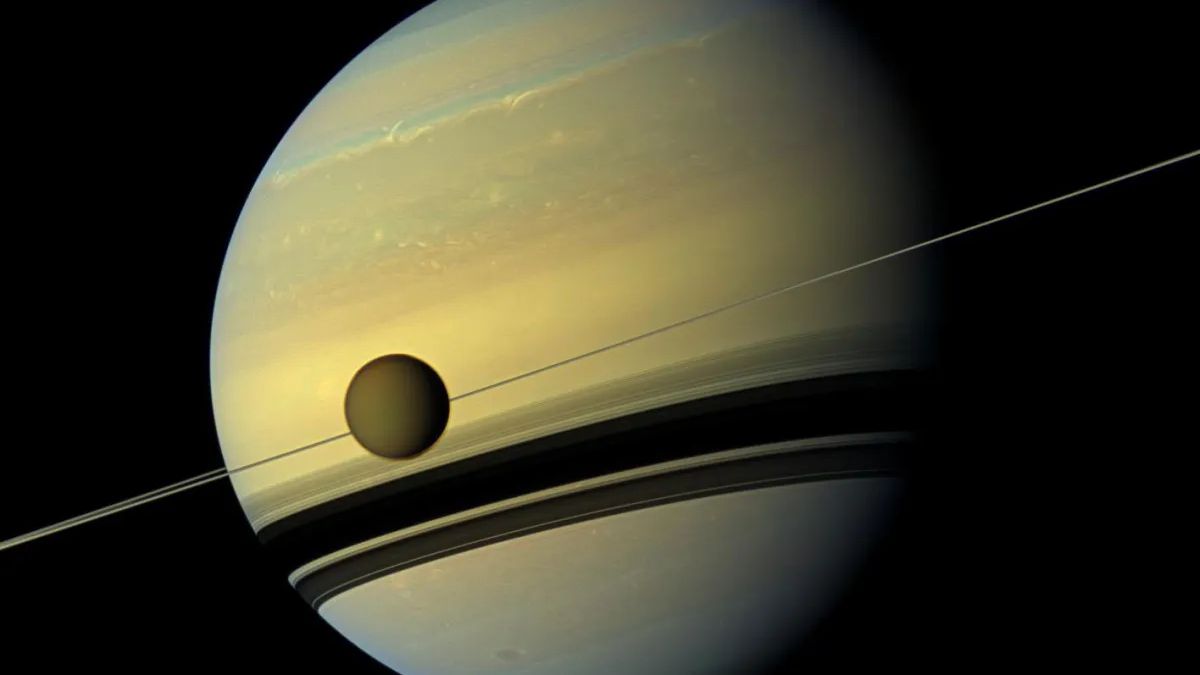Titan’s subsurface ocean, as well as similar oceans within other icy moons in the outer solar system, may lack the necessary organic chemistry to support life, as indicated by recent research.
Saturn’s largest moon, Titan, renowned as the second largest moon in the solar system, is enveloped in a haze of petrochemicals and harbors a rich assortment of organic molecules containing carbon on its surface. Despite this intriguing chemistry, Titan remains extremely cold with surface temperatures plunging as low as –179 degrees Celsius (–290 degrees Fahrenheit). In such frigid conditions, the chemical processes essential for life unfold at a sluggish pace.
Nevertheless, beneath the icy exterior, at an estimated depth of around 100 kilometers (62 miles), lies a colossal subsurface ocean with a volume surpassing that of Earth’s combined oceans by a factor of 12. Similar subsurface oceans are believed to exist within the moons of Saturn, such as Enceladus, as well as Jupiter’s moons Europa and Ganymede.
Liquid water is often associated with the potential for life to thrive. However, Catherine Neish from Western University in Ontario, Canada, a leading planetary scientist, spearheaded a study challenging the notion that Titan’s ocean, along with the oceans of other icy moons, could be conducive to life.
The research team posited that for Titan’s ocean to be habitable, a substantial supply of organic molecules from the surface must be able to reach the ocean to initiate prebiotic chemistry crucial for the emergence and sustenance of life.
The primary mechanism for transporting organic material to the ocean is through impacts that melt the surface ice, creating pools of liquid water infused with organic molecules. Due to the density disparity between liquid water and ice, the organic-laden water sinks. However, Neish’s analysis revealed that the frequency of impacts is insufficient to deliver an ample quantity of organic material to Titan’s ocean.
For instance, the team estimated that only approximately 7,500 kilograms (16,534 pounds) of the simplest amino acid, glycine, reaches Titan’s ocean annually. While this may seem substantial, it equates to the mass of a single male African elephant spread across an ocean exceeding Earth’s oceans’ volume by twelvefold. In essence, it is a mere fraction in the vast ocean.
Neish acknowledged the possibility of alternative scenarios, such as hydrothermal vents on Europa, where organic molecules are sparse on the surface but may be abundant near the seafloor, interacting with the moon’s rocky core to support life. Similarly, the potential for organic material originating from Titan’s interior, rather than its surface, to sustain life is being explored.
Despite the ongoing investigations, concerns persist regarding the suitability of interior-sourced organics for life, given their likely composition of primarily aromatic compounds, posing challenges for the formation of biomolecules like amino acids.
While direct exploration of these icy moons’ oceans remains a distant prospect, Neish’s research underscores the exciting prospects for missions like Dragonfly to Titan, slated for 2028, which could unveil crucial insights into the moon’s potential for hosting life.
The study by Neish’s team, published on February 2nd in a scientific journal, sheds light on the complex dynamics of subsurface oceans within icy moons and their implications for astrobiological exploration.
